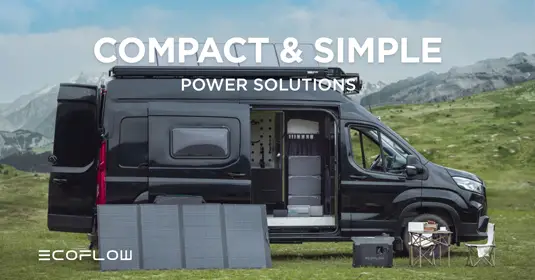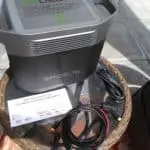This is a sponsored post on behalf of EcoFlow. All opinions are our own.
RVing has become popular in recent years. Like ridiculously popular. So popular it’s getting annoying for many long-time RVers.
If you’re getting sick of the crowded campgrounds with noisy guests and yapping dogs, you might be ready to throw in the towel. However, before you do that, consider boondocking. Boondocking is an easy way to camp for free in some beautiful and uncrowded locations.
When boondocking, you don’t have any hookups, so having your own source of power, either a generator or solar power, is necessary. However, many people find campers with generators to be noisy and detract from the peacefulness of boondocking. While you can use a generator to boondock and decide if it is a good fit for you, the best option, in the long run, is solar power for RVs.
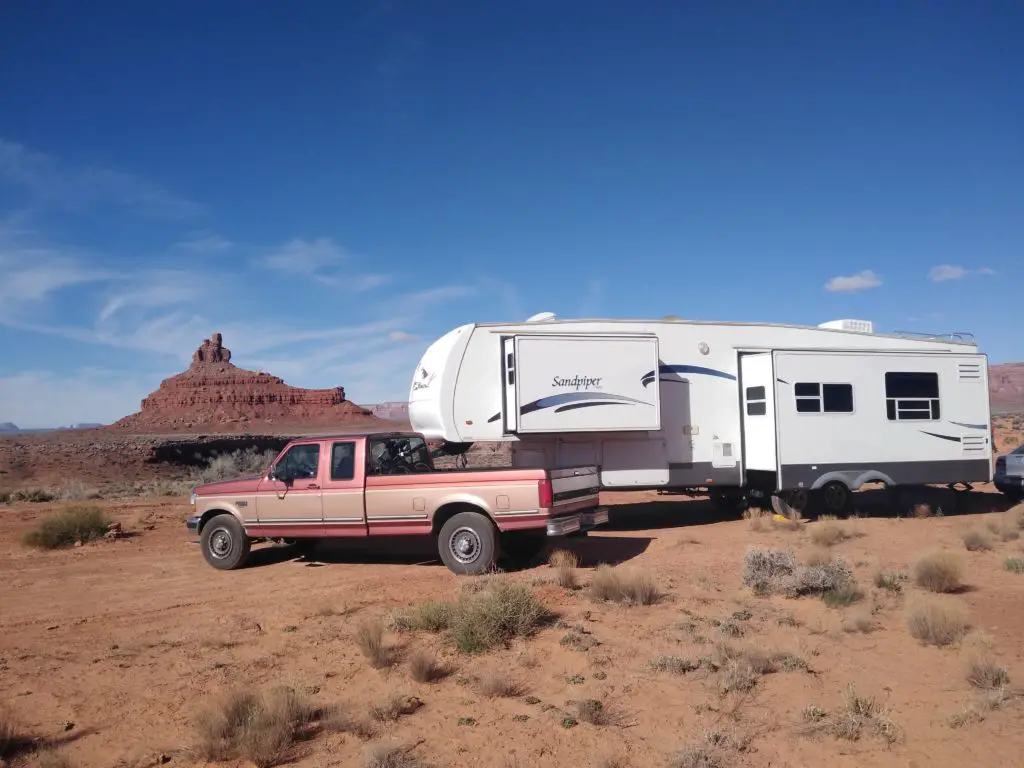
Why Bother with Solar Power in an RV?
If you are someone who enjoys staying at campgrounds with full hookups, solar power for RVs makes little sense. RV solar power is best if you plan to boondock often either on your private land or on public land where camping is allowed.
If your RV already has an onboard generator, it may feel silly to spend a bunch of money on the initial costs for RV solar power. However, in the long run, solar is a clear winner. Solar is greener and quieter which makes for a more peaceful camping experience. Solar power is also often cheaper in the long run, and you don’t have to worry about constantly leaving your site to refuel your generator.
You can also use your solar power at campgrounds if you otherwise have to worry about metered electricity (or just want to do your part to help the planet). Generator use is prohibited by some RV parks entirely and others don’t allow you to use them at night because they are so loud. If you ever find yourself in a situation where the power is out, solar power offers an alternative.
An added benefit of solar power is that through the end of 2023 you may qualify for the solar energy tax credit if you install solar on your RV. If you’re not sure if you qualify, be sure to discuss your situation with a tax professional.
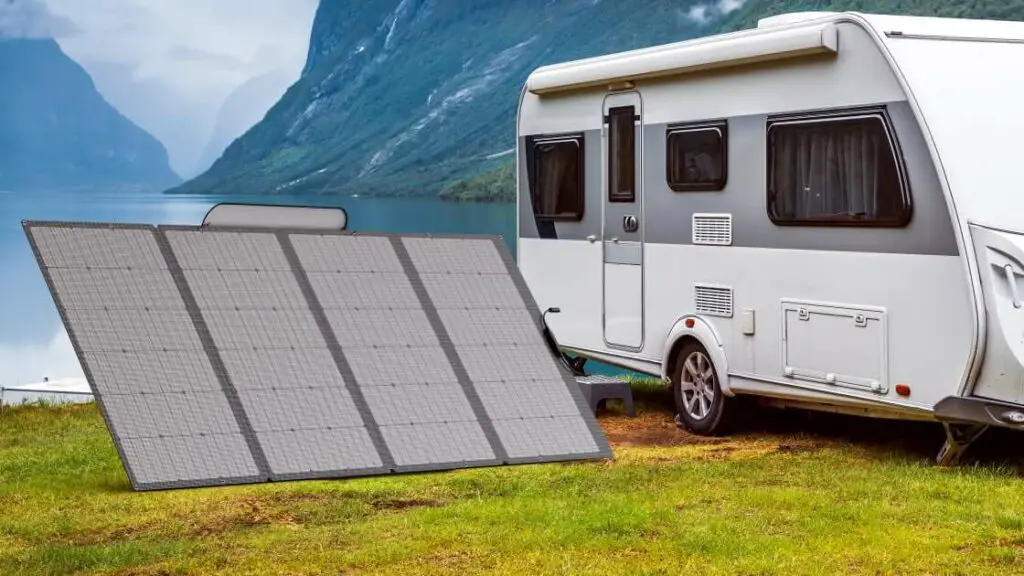
How Much Solar Power do I Need for My RV?
So now that you’re convinced solar power for RVers is the way to go, where do you start? When deciding how much power you need for your RV, the answer will vary depending on your energy usage habits. A van is going to use a lot less power than a massive 5th wheel with a residential fridge and two air conditioners, for example.
The best way to find out how much power you need for your RV is to do an energy audit. An energy audit allows you to determine how much power you currently consume in your RV. Then you can determine if/how you may need to cut energy usage. It will also let you know how much power your RV solar setup needs to provide.
The folks over at Technomadia have an excellent guide to completing an energy audit that will walk you through the steps. Once you have this information, you’ll be better prepared to select an RV solar power setup that will work for you.
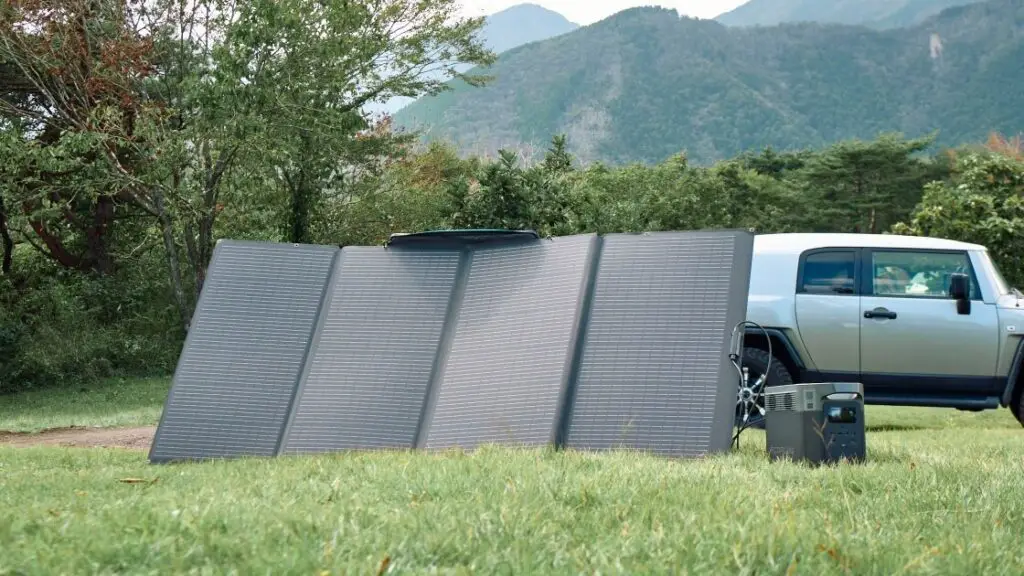
Options for Installing Solar Power in your RV
For installing solar power in your RV, you have three choices.
First, you can pay a professional a ridiculous sum of money to design and install your solar setup. Not only is this expensive, but you also likely won’t know how anything works, so if anything were to go wrong, troubleshooting will cost you additional money.
Second, you can learn a bunch of things about electricity to design your own RV solar system. Here’s a brief overview of just some of the information required. First you’ll need to decide how much power you need, how many solar panels are required, and what DC voltage you want to run. Then you’ll need to spec all your components to that voltage, get a charge controller for your solar panels, and learn how to wire them in series versus parallel.
But wait, there’s more. Then you need to know, based on your power consumption and voltage, which power inverter you need to select. Next, you have to connect the inverter to your AC subpanel and depending on where everything is mounted in your RV and the distances between everything you need to spec out the correct gauge wire. You also need the correct DC-DC converter to step down the voltage to attach to your DC panel depending on which voltage system you selected to go with. You also need to determine which type of batteries you need and which gauge wire goes with your batteries. Not to mention what type of DC circuit breakers you need and where to place them for your solar panels and your battery. RV electricty can be confusing, that’s for sure.
Confused yet? Until recently, these were the only workable ways to get your RV solar power setup running. Fortunately, there is a third option now. That’s where EcoFlow comes in.
Make Life Simple with EcoFlow All-In-One Solar Power Kits
EcoFlow’s power kits offer an alternative to expensive or confusing options for installing solar on your RV. The power kits are designed specifically with RVers and van dwellers in mind and are all about simplicity. EcoFlow also has options for off-grid home kits, but since this is an RV page, we’ll be focusing on how EcoFlow makes life easier for RVers.
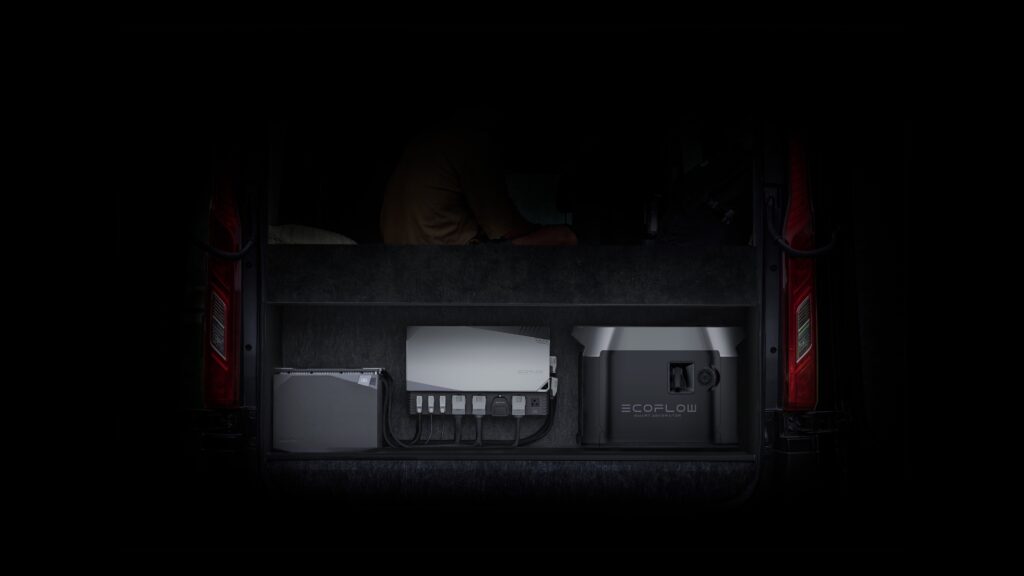
What is Included in an EcoFlow Power Kit?
All EcoFlow power kits include everything you need to get up and running with solar. The key components are the power hub, batteries, solar panels, and a smart distribution panel. EcoFlow also has an app that you can use to control, monitor, and view your power consumption.
The EcoFlow power hub for RV solar power does the job of two MPPT solar charge controllers and one DC-DC battery charger with MPPT. It also has one DC-DC converter and an inverter and charger in one. The all-in-one design is a major space saver compared to alternatives. When you are in an RV, every bit of space saved is beneficial.
How Much Power Can I Get with an EcoFlow Power Kit?
There are several kits being released by EcoFlow to meet a range of power needs. The cool thing is that you can expand the system if needed. Adding additional panels or batteries is easy, although the company doesn’t recommend combining the 2kWh and 5kWh batteries. You can add up to three 5kWh batteries for a maximum of 15kWh of power.
The maximum solar panel input is 3000 watts, which includes 1000W from foldable solar panels. These movable panels will allow you to generate power even if you park your RV in the shade. Simply set up the foldable panels nearby in a sunny spot.
You can charge your batteries via solar panels, the EcoFlow smart generator, your RV alternator while driving, shore power, grid power, or a traditional generator. Your distribution panel will allow you to operate both AC and DC appliances.

What Installation is Required for EcoFlow’s RV Solar Power Kits?
EcoFlow’s RV solar power kits are much easier to set up than competitors. The power hub offers a plug-and-play approach, which means most components of the system plug directly into the power hub with no additional installation needed.
The most challenging aspect of the setup, from what I can see, is connecting the EcoFlow power hub to your RV’s existing electrical system. To do this, you’ll have to wire the EcoFlow power kit AC main output cable to the RV main AC breaker panel. You will also need to wire the EcoFlow DC-DC converter to the RV’s main DC fuse box.
If the previous words confused you, please hire a professional to complete this portion of the setup for you. The good news is that you’ll spend less on hiring an RV technician or electrician to complete this wiring than you would if you paid someone to design and install every aspect of the system.
Other RV Specific Benefits to EcoFlow Power Kits
For RVing, space is always at a premium. EcoFlow offers several benefits for RVers in this regard. First, the batteries allow for up to three batteries to be stacked. You cannot stack most other batteries, meaning they take up a significant amount of room in what is already a small space.
EcoFlow also uses a 48-volt system which allows for thinner gauge wires that take up less space in your RV. Further, you’ll have the potential to run things that draw more power, like an air conditioner, for example. The batteries are also self-heating, allowing you to use them even if you RV in colder climates.

Pre-Order Your EcoFlow Power Kit Starting July 5, 2022
If you’re intrigued by the idea of adding solar power to your RV so you can say goodbye to the crowds by boondocking, now is a great time. Not only can most RVers get the solar tax credit, but EcoFlow is also offering reduced introductory pricing on pre-orders for their solar power kits. Orders open on July 5th, 2022.
